New Orleans
Page 1 | Page 2 | Page 3 | Page 4
Wednesday and Thursday
November 19 & 20, 2003
![]()
![]()
Just A Gigalo
If music doesn't start up immediately, refresh your
screen
Wednesday

Alan heads off to another meeting.
Metairie Cemetary
You know you're a New Orleans native when..."Your burial plot is six feet over rather than six feet under."
 |
Louis Prima (1911-1978) late great trumpeter, singer, songwriter and swingin' bandleader; Prima's life was documented in the book, "Just A Gigolo - The Life and Times of Louis Prima"; his tomb at Metairie Cemetary reads "When the end comes I know, they'll say, 'just a gigalo', as life goes on without me" |
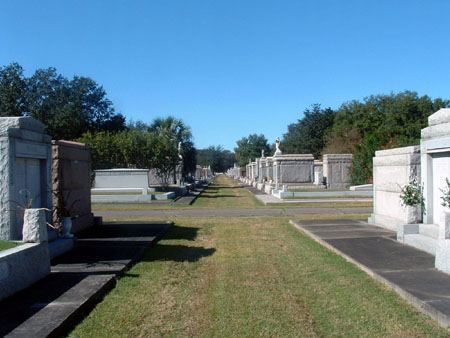
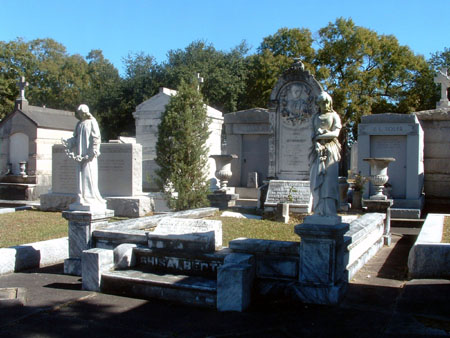
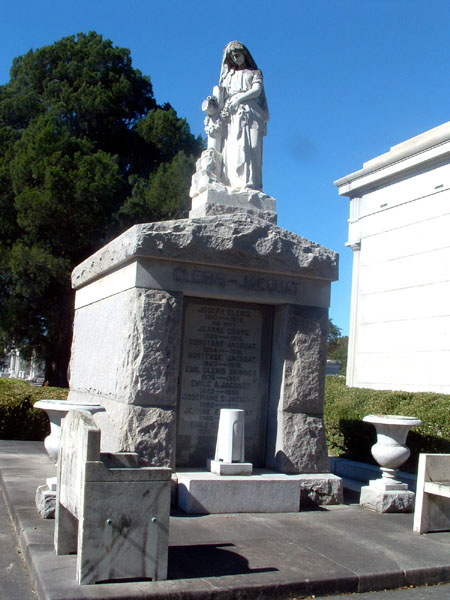
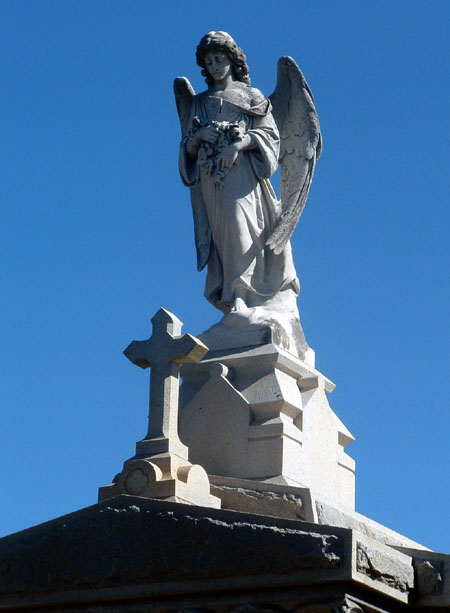
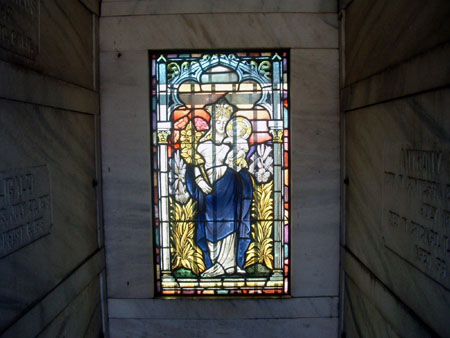
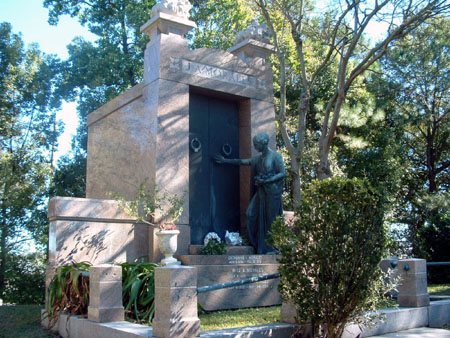
Morales
One of the most "controversial" tombs in New Orleans, the Morales tomb was originally built for Josie Arlington, the most famous of the Storyville madames. It attracted attention later when a red light was installed on a road behind it. Josie's remains were moved later after her estate was liquidated. - The Flaming Tomb of Josie Arlington in New Orleans. According to legend her eerie crypt would light up at night as if on fire. It was also said that a life-sized statue on the steps outside would come to life.
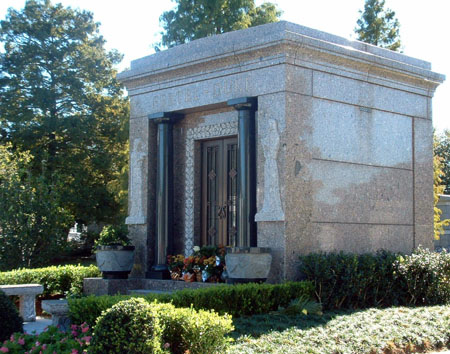
Fertel-Duke
Ruth's Chris Steakhouse personifies the American dream. The founder, Ruth Fertel, was struggling in New Orleans to put her children through college by working as a lab technician. She decided to try to improve her finances by going into business for herself. She purchased Chris Steakhouse. Reflecting pride of ownership while trying to maintain the goodwill built up by the prior owner, she placed her name in front. Hence, we have "Ruth's Chris Steakhouse".
After the tomb was done, she and her friend, who is also entombed here, had a part on the lawn next to the tomb to celebrate.

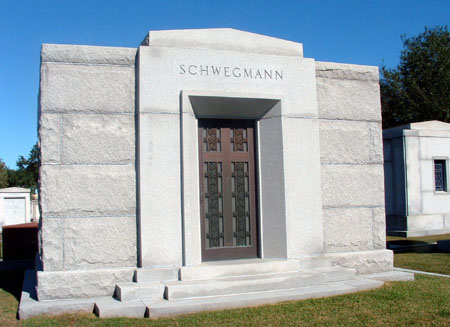
Schwegmann
In 1869, John W. and G.A. Schwegmann opened Schwegmann's Grocery and Bar at Piety and Burgundy. They later offered self-service shopping for a 10% discount (in a time when clerks filled customer orders). John W.'s sons John G., Anthony, and Paul opened the first "Schwegmann Bros. Giant Super Market" at 222 St. Claude in 1946. John G.'s son John F. took over in the 1970s.
You know you're a New Orleans native when..."Ya making groceries at Schwegmann's with ya mama to buy Dixie beer and crawfish so you can eat and suck heads in the French Quarter before a Mardi Gras parade."
Commander's Palace Restaurant
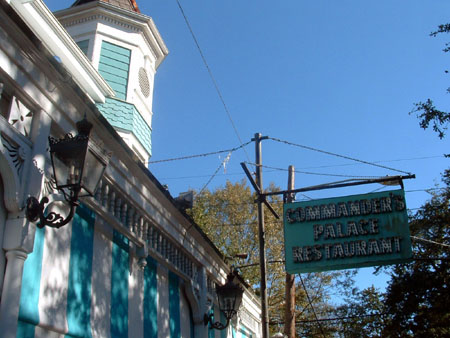
Commander's Palace Restaurant
Where we ate lunch.
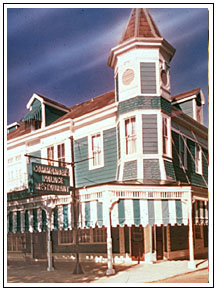 |
"A hidden jewel in the heart of New Orleans' Garden District, Commander's Palace is truly one of the finest dining experiences in the world. Commander's setting with sounds that soothe the soul and set the mood for an unparalleled culinary adventure." Source: www.commanderspalace.com/ |
Wednesday Night
Alan and I went to the French Quarter for dinner at Ralph & Kacoo's
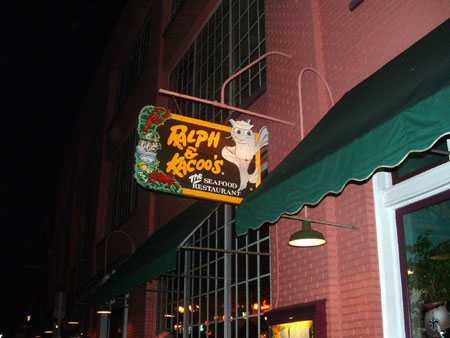
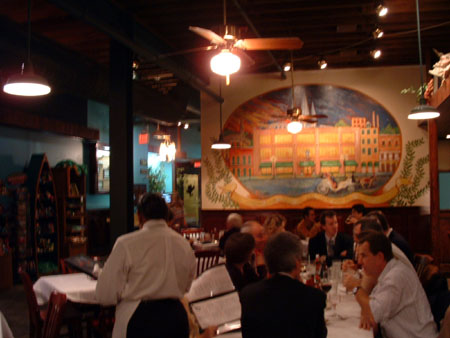
Thursday
After breakfast in our hotel, I spent the day in the French Quarter taking a lot of pictures and visiting several historical sites.



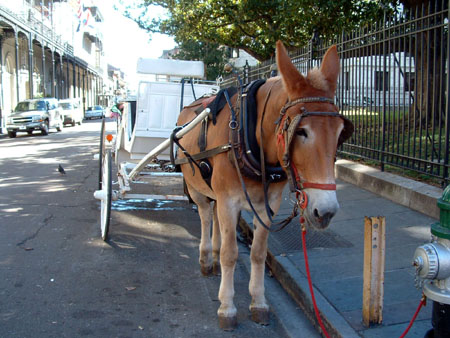
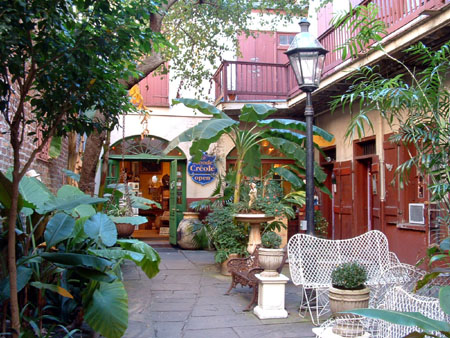
Above and Below: I bought some great books on New Orleans women in this shop.
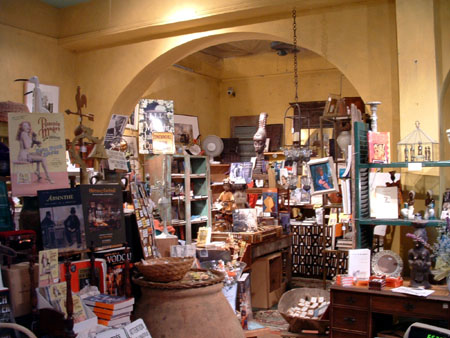
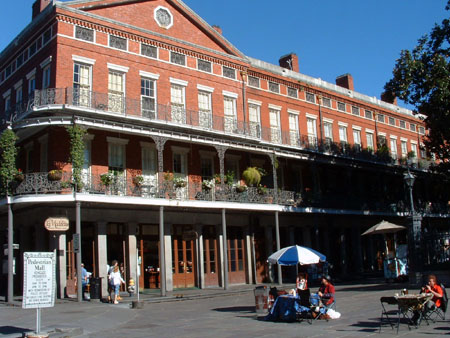
Pontalba Apartments
The Pontalba Apartments, are two sets of handsome red brick structures, one on each side of Jackson Square, were built in the late 1840's by the Baroness Micaela Pontalba.
She was the daughter of a very wealthy Spaniard, Don Almonester y Rojas.
She inherited the prime real estate around the square and had these apartment buildings constructed to leave a permanent European imprint on the heart of the city of New Orleans.
The baroness married her cousin Baron Celestin de Pontalba in France.
She caused a scandal when she had a near fatal fight with her father-in-law, left her husband, and returned to New Orleans in the 1840's to build the apartments on Jackson Square.
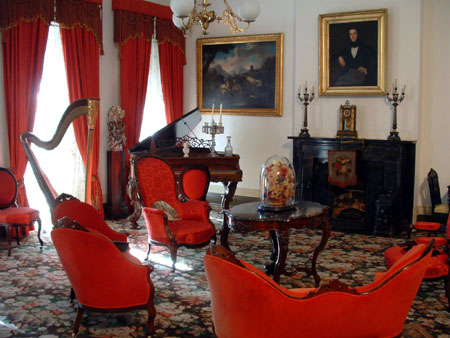
1850 House
Pontalba Apartment
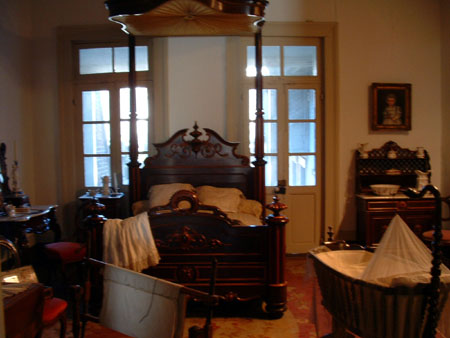
1850 House
Pontalba Apartment, Master Bedroom
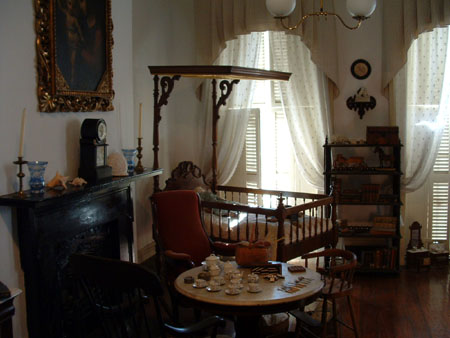
1850 House
Pontalba Apartment, Children's Room
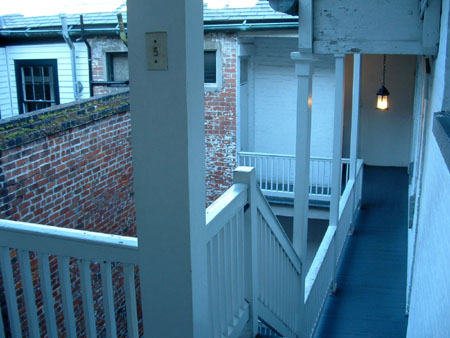
1850 House, 3rd Floor
Courtyard
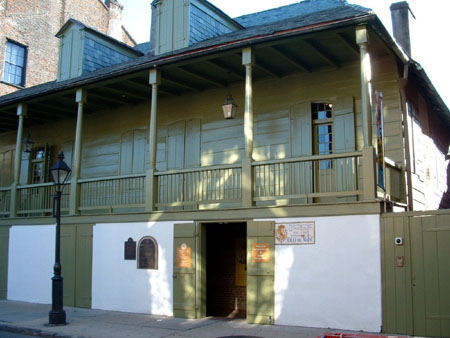
Madame John's Legacy
New Orleans' Oldest House, 1788
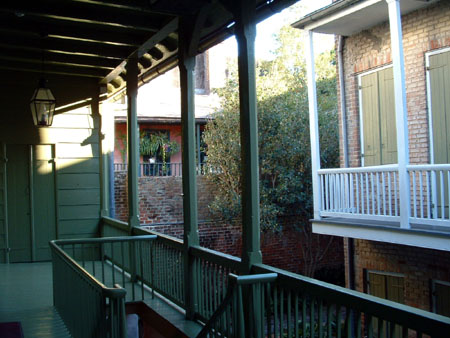
Madame John's Legacy
View From Second Floor
How Madame John's Legacy Got It's Name
Local color writer, George Washington Cable, penned many stories that explored the difficulties faced by Louisiana’s people of mixed racial heritage, and many of his plots revolved around the question of whether his light-skinned heroines were actually black or white.
Such a question animates the plot of "‘Tite Poulette," a story Cable completed in 1873.
While doing research in old newspapers Cable reported that he gained sympathy for the plight of quadroon and octoroon women, who, in antebellum New Orleans, sometimes became the mistresses of white men because marriage across the color line was illegal.
An early advocate of integrated schools and public accommodations, Cable’s racial views were unpopular in the post-Reconstruction South. In 1884, he and his family moved to Northampton, Massachusetts.
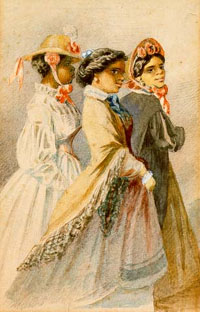
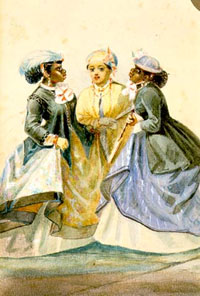
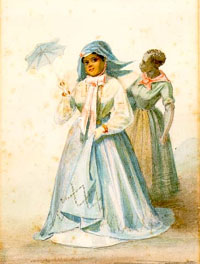
Watercolors of Women of Color
Edouard Marquis
1867, probably New Orleans
Like Cable’s stories written a decade later, Marquis’
images of women of color present them as sympathetic and complex subjects.
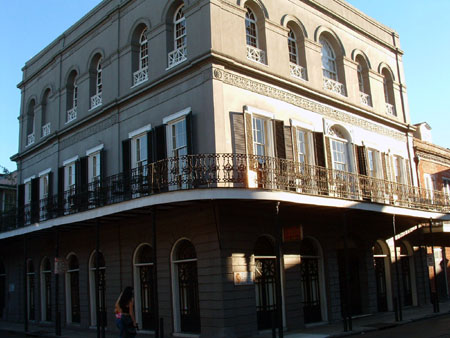
Madame Lalaurie's Mansion
" Haunted House"
1140 Royal Street
April 10, 1831 -- A local newspaper told of seven slaves taken from burning building, naked or in rags, scarred and beaten with holes in their heads, arms, and legs.
Some had been chained to the walls of the attic and had been manacled in positions that crippled them for life. The attic was littered with instruments of torture.
The rescued slaves told of horror of how Madame Lalaurie beat them daily and tortured them.
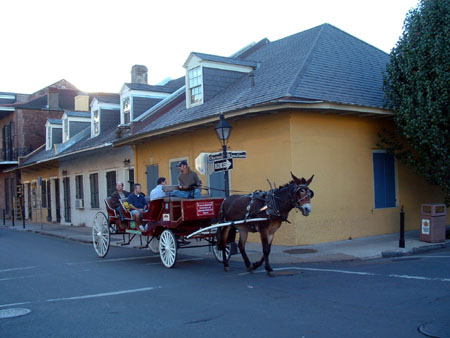
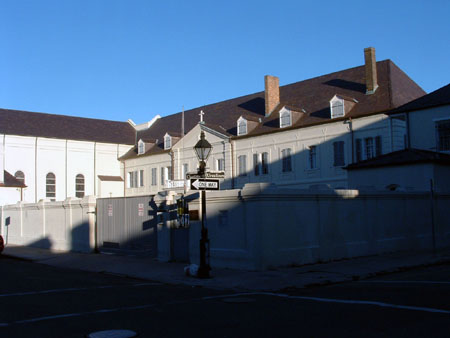
Old Ursuline Convent
The Ursulines, a French order of nuns, were asked by Bienvielle in 1725 to come to New Orleans for the purpose of running a military hospital. King Louis XV authorized the Ursalines' departure from France.
Historians since have commented that the work of the Urlsulines "runs like a golden thread through the history of Louisiana."
The convent was home for the order from 1734 to 1824 and is the oldest surviving structure of French colonial architecture in the Mississippi Valley. Today it houses the archives of the Archdiocese.
The Ursuline's school continues as Ursuline Academy at 2635 State Street.
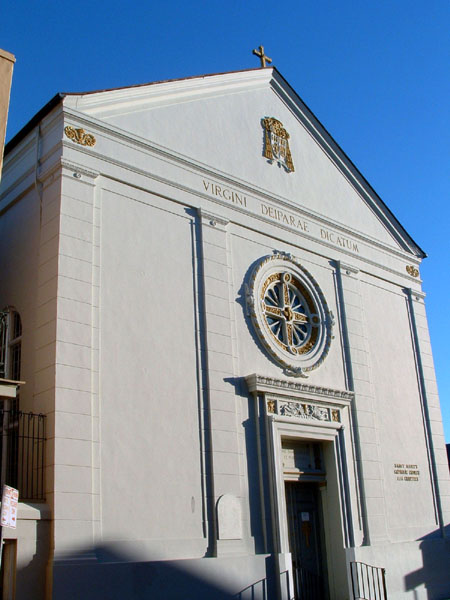
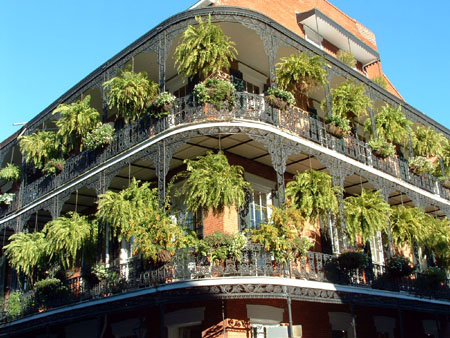
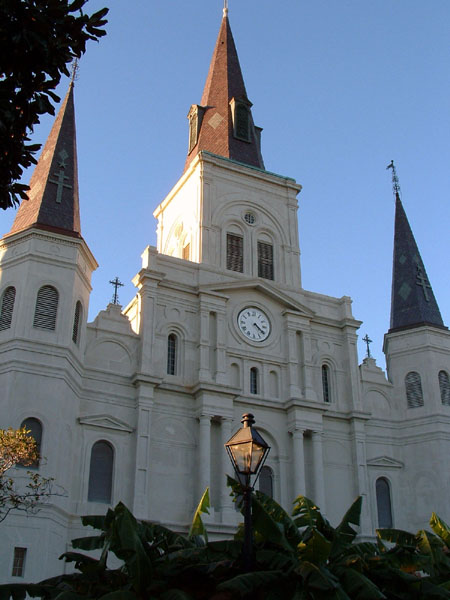
St. Louis Cathedral
St. Louis Cathedral ( circa 1794),which dominates the area was named for the French king who led two crusades, is the oldest active cathedral in the United States.
The interior is well worth a visit, with dramatic murals, sculpture, stained glass and the inscribed marble tombs of early prominent citizens.
The cathedral is open to the public. Worshipers are welcome, and tours of the buildings are given daily.
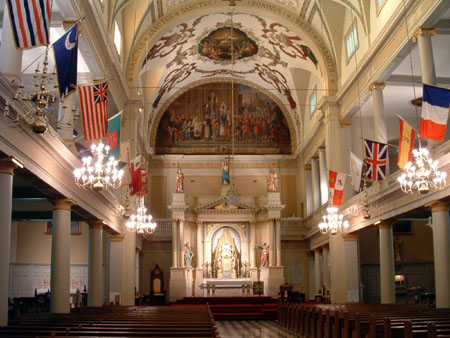
St. Louis Cathedral Interior
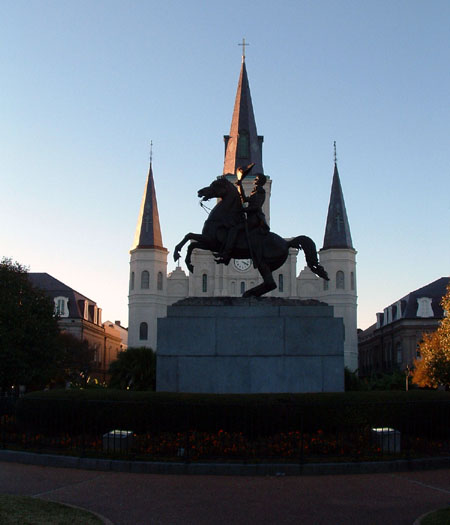
Jackson Square
Jackson Square has always been an open area and the heart of the French Quarter. Originally, known as the Plaza d'Armas, it was a large open common, used at times as military parade grounds, and later as a market place for fish, fowl, and produce.
![]()
[ Next ]
[ Return to Photo Albums ]
[ Nancy Ford's Home Page ]
Copyright. All rights reserved. Nancy's Design Studio